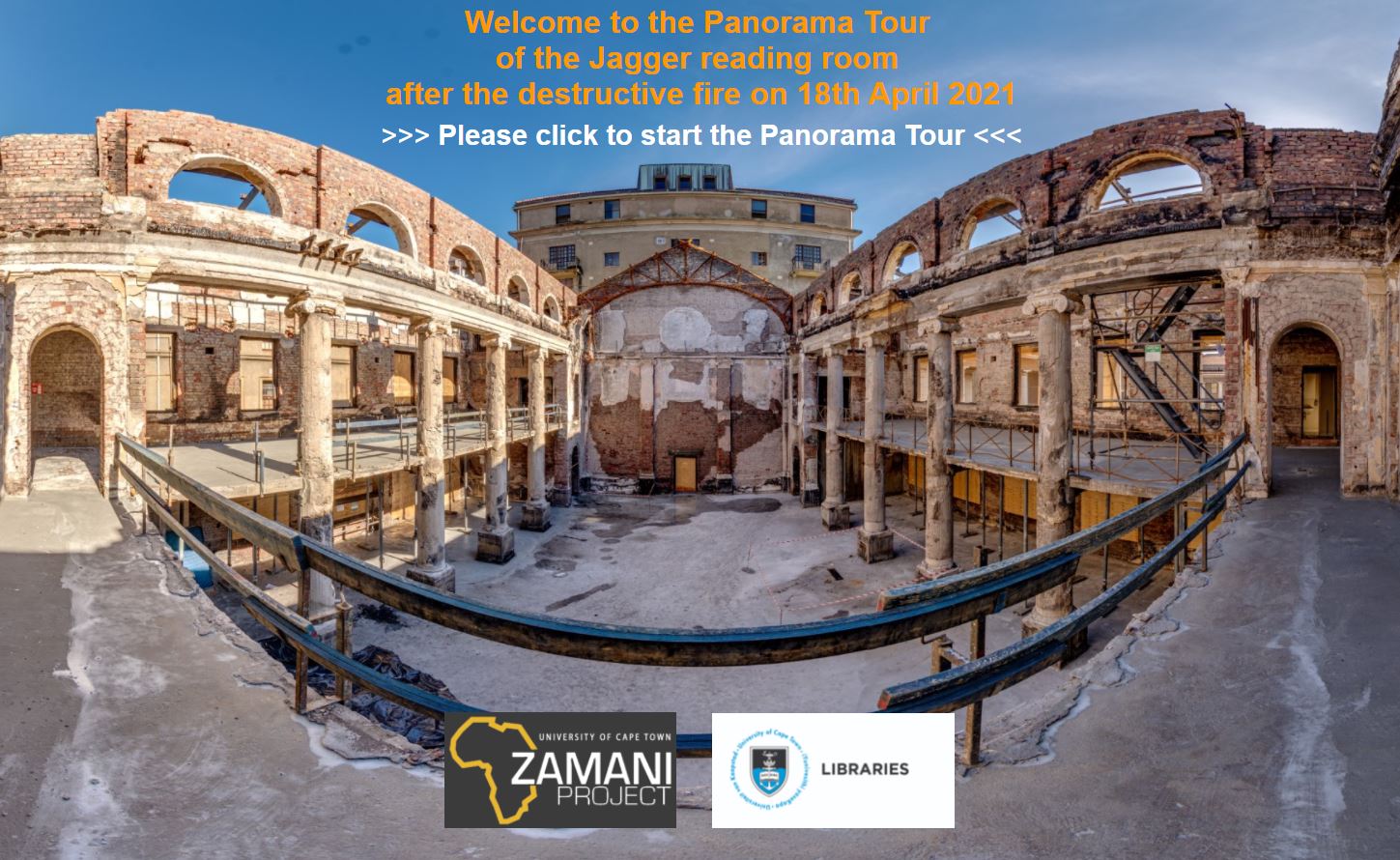by Thomas Slingsby, GIS Consultant (Digital Library Services), UCT Libraries

During my time working on the Jagger Salvage Project I would fairly regularly enter the space that was the Jagger Library Reading Room.
The destruction was awesome.
What, for me, had easily been the most beautiful venue at UCT had been reduced to a ruin. Gone were the beautiful bookshelves, the vaulted ceilings and the quiet inspiration that was the reading room. In its place was a hollow ruin, an echoing space with crumbling pillars reaching to the open sky. The challenge at the time was to ignore the tragedy and to get on with the task at hand, which was salvaging as much as we could from that beautiful old building. I would regularly tell those working on the salvage, “Do not engage with the content, let’s just get it safe”. It was incredibly difficult not to get overwhelmed by the tragedy of what had taken place.
While it was important to suppress those feelings in order to focus on the salvage, it was also very clear that what had happened to the Jagger Library needed to be documented. People want to know what happened, and, as a Library, we needed to keep as clear a record of events as possible.
During the course of my career at UCT as a Geographic Information Systems (GIS) specialist I have had the opportunity to work with UCT’s heritage site documentation specialists, the Zamani Project, on numerous occasions. Most recently I worked closely with them to openly publish a number of their data sets on UCT Libraries open data repository ZivaHub. One of the products that they published was a panorama tour of the Kua ruins on Kua Island, off the coast of Mozambique. The Jagger Library reading room seemed an ideal candidate for its own panorama and so, with the Library leadership’s blessing I approached the Zamani Project to collaborate with UCT Libraries to produce a panorama tour of the ruins of Jagger Libraries reading room.
For once the pandemic worked in our favour. With travel severely restricted at the time, the Zamani Project were not able to document heritage sites outside of South Africa and so had sufficient spare capacity to be able to create the panorama tour.
With the panorama tour completed it is now possible for anyone to “walk around” the interior of what was one of the most special libraries in Afrika. The tour can be viewed online here https://ibali-manifest.uct.ac.za/jagger/ or it can be downloaded and viewed on your own machine (windows only) here https://doi.org/10.25375/uct.16622584.v1
